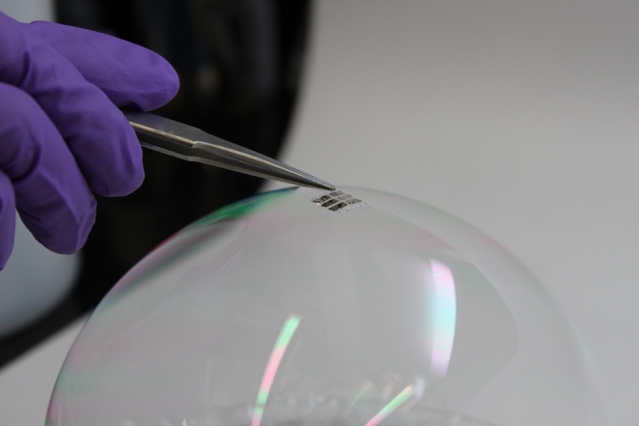Researchers Create The Thinnest And Lightest Solar Cell Ever Made
MIT researchers have now created the thinnest and lightest solar cells ever made. The cells are so thin and flexible that they could even be attached to your shirt or smartphone.
Admittedly, the technology could take years to make it to market, the proof-of-concept portrays a new method for making solar cells that could power the future of electronic devices.

The new approach uses substrate to support the solar cell, as well as a protective shield from the environment. The substrate is made in place, so it’s never touched or removed during development, which minimizes exposure to dust or other contaminants that could degrade the cell’s performance.
“The innovative step is the realization that you can grow the substrate at the same time as you grow the device,” said Vladimir Bulović, MIT professor.
To create the super-thin solar cells, the MIT team used a flexible polymer called parylene as both the substrate and the overcoating, and an organic material called DBP for the light-absorbing layer. Parylene is commonly used to protect medical implants and devices, as well as printed circuit boards from environmental damage. The development process takes place in a vacuum chamber at room temperature and without the use of any solvents, unlike conventional solar-cell manufacturing, which requires high temperatures and harsh chemicals. In this case, both the substrate and the solar cell are “grown” using established vapor deposition techniques.
The solar cell used in these experiments is not extremely efficient, since the team was just trying to test out a low-weight solar cell to start, the new cells have already demonstrated an output of 6 watts per gram — about 400 times higher — than silicon-based cells.
“It could be so light that you don’t even know it’s there, on your shirt or on your notebook,”said Bulović. “These cells could simply be an add-on to existing structures.”
Story via MIT.

Comments are closed, but trackbacks and pingbacks are open.